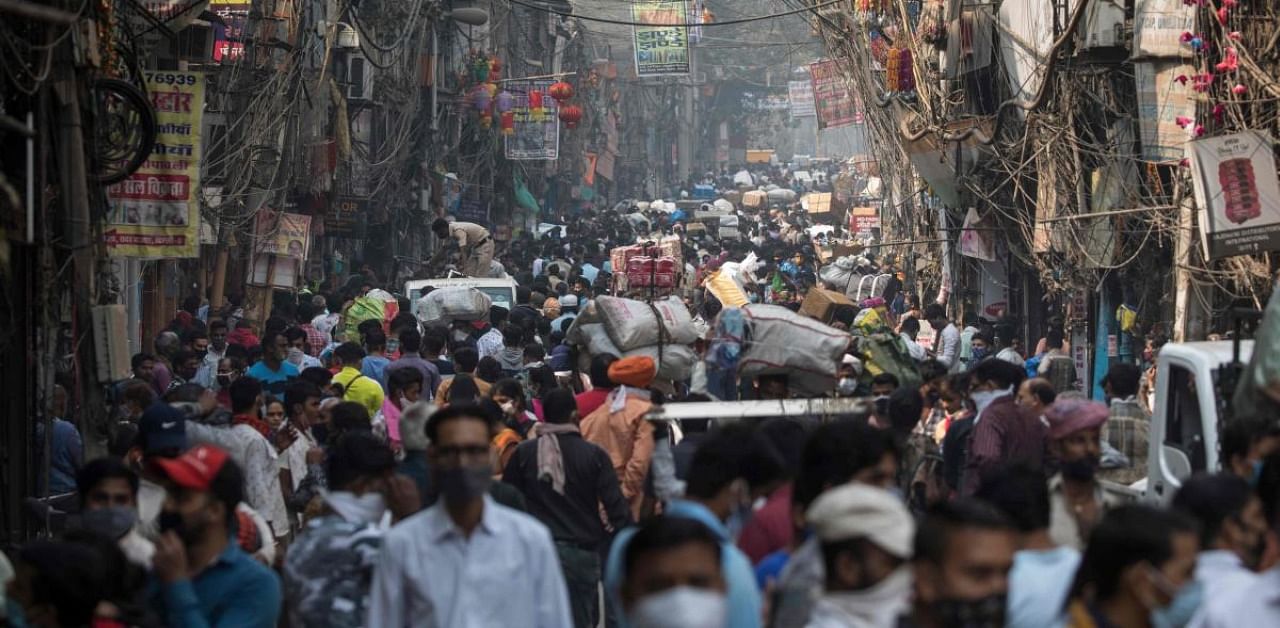
Delhi has reported more than 6,000 Covid-19 cases daily in the past few days and 13 per cent of this increase has been estimated to be due to air pollution, the Indian Medical Association said on Saturday.
Stating that N-95 masks and air purifiers may not provide full-time protection, the doctors' body stressed on the implementation of long-term measures to bring down pollution levels.
Air pollution damages the inner lining of the lungs and hence increases the severity of Covid-19 infection.
"Increased air pollution leads to increased inflammatory response. In the last few days, Delhi has reported more than 6,000 Covid-19 cases per day. 13 per cent of the increase has been estimated to be due to pollution," the IMA said.
In the last 10 days, the national capital and its neighbouring areas have seen a sharp spike in air pollution levels.
The Air Quality Index (AQI) in Delhi on Saturday remained above 350 while the safe limit is 0-50. The WHO's ambient air pollution data shows that the levels of PM 10 and PM 2.5 in Delhi are way above the normal levels, the IMA stated.
Poor air quality may result in the aggravation of asthma, COPD, high BP and even cardiovascular diseases. Merely walking could result in health complications due to the high concentration of particulate matter (PM) 2.5 in Delhi's air.
"N-95 masks and air purifiers may not provide full-time protection. An AQI of above 300 makes it difficult not only for people with respiratory problems but healthy people as well. Hence, it is advisable that people do not go out early in the morning when pollution levels are the highest. Elderly and children are more likely to develop infections and allergies due to smog," the doctors' body said.
The major sources of air pollution in Delhi are vehicular pollution, construction activities, carriage of construction material, dust on roads, burning of agricultural or crop residue, industrial and powerhouse emissions, burning of municipal wastes, thermal energy power plants and mining in Aravalli hill areas, it said.
It listed measures such as the use of public transport, buying energy-efficient vehicles, planting a garden wherever possible, making use of solar energy, using recyclable products which can be adopted by the people to help reduce pollution.
There is also a graded response action plan in Delhi and NCR which includes measures such as the prohibition on entry of trucks into Delhi, ban on construction activities, the introduction of odd and even scheme, closure of brick kilns, ban on diesel generator sets, garbage burning in landfill etc. The banning of crackers and stubble burning in the hinterland are helpful public health measures.
"Implementation of long term measures is important," the IMA added.